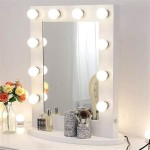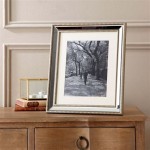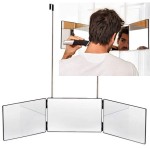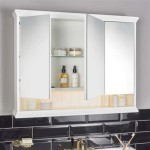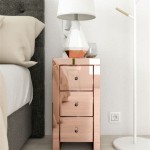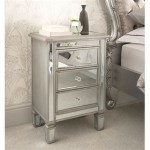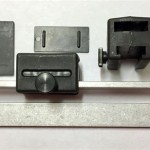What Does A Double-Sided Mirror Look Like?
A double-sided mirror, also known as a two-way mirror, appears much like a standard mirror under most conditions. It consists of a pane of glass coated with a thin, metallic, partially reflective layer. This reflective coating allows some light to pass through while reflecting the remainder. The degree of reflection and transmission depends on the specific characteristics of the metallic coating, which determines the mirror's reflective properties.
The key to a two-way mirror's function lies in the difference in lighting levels between the two sides. In brightly lit environments, the reflection of the brighter side dominates, creating the appearance of a regular mirror. However, when one side is significantly darker than the other, some light can pass through from the brighter side, allowing observation from the darker side.
Visually differentiating a two-way mirror from a standard mirror can be challenging. Under normal circumstances, both appear nearly identical. However, several methods exist to distinguish between them. One common test involves placing a fingernail against the reflective surface. With a regular mirror, a noticeable gap will appear between the fingernail and its reflection due to the glass layer. On a two-way mirror, the reflection will appear much closer to the fingernail due to the reflective layer being applied directly to the glass surface.
Another method involves observing the surrounding environment. If the mirror appears unusually reflective, particularly in a context where privacy is expected, it might be a two-way mirror. Checking for concealed lighting or cameras behind the suspected mirror can also provide further clues.
The lighting conditions play a crucial role in the appearance of a double-sided mirror. In balanced lighting, where both sides of the mirror are equally illuminated, the mirror will function similarly to a standard mirror, reflecting images from both sides. However, the slight transparency of the coating might create a faint ghost image of the opposite side.
In unbalanced lighting, where one side is considerably brighter, the brighter side's reflection will dominate. From the brighter side, the mirror will appear largely reflective. However, from the darker side, the mirror will allow observation of the brighter side while still exhibiting some reflectivity of the darker environment.
The manufacturing process of a two-way mirror involves applying a thin, metallic coating to a glass surface. This coating, typically a thin layer of silver, aluminum, or chrome, is applied through a process called vacuum deposition. The thickness of this metallic layer determines the mirror's reflective properties, balancing reflectivity and transparency.
The applications of two-way mirrors vary widely. They are commonly used in interrogation rooms, allowing observation from a concealed adjacent room. They also find use in psychological research, observation rooms in medical facilities, and certain architectural applications. Their use raises important ethical considerations, especially concerning privacy, and necessitates responsible and transparent application.
Identifying a two-way mirror requires careful observation and awareness. While the fingernail test and observation of surroundings can provide indicators, more definitive confirmation might require professional assessment. Understanding the principles behind these mirrors and their potential applications promotes informed decision-making and helps protect individual privacy.
The reflective properties of a two-way mirror are determined by the metallic coating. The specific material and thickness of this coating dictate the degree of light reflection and transmission. Manufacturers can adjust these parameters to achieve the desired level of reflectivity for specific applications.
The historical development of two-way mirrors can be traced back to the development of silvered glass mirrors. Early versions relied on partial silvering to achieve the desired effect. Advancements in coating technology have led to more precise control over the reflective properties, leading to the modern two-way mirrors used today.
The ethical implications of using two-way mirrors often center around privacy concerns. Their use in surveillance or observation without the knowledge or consent of the observed individuals raises significant ethical questions. Transparency and responsible application are crucial in mitigating these concerns.
While two-way mirrors can serve legitimate purposes in various fields, understanding their properties and potential misuse empowers individuals to be more aware of their surroundings and potential privacy implications. Careful observation, coupled with knowledge of these specialized mirrors, can help individuals identify potential privacy risks and make informed decisions.

How To Tell If A Mirror Is Two Way Or Not 8 Steps With Pictures

How To Detect A Two Way Mirror Fingernail Test

How To Tell If A Mirror Is Two Way Or Not 8 Steps With Pictures Hotel Mirrors Double Sided

How To Tell If A Mirror Is Two Way Or Not 8 Steps With Pictures

Tips For Identifying Whether Your Mirror Is Two Way Or Not Ledmyplace

Double Sided Plastic Mirrors 300 X 200mm Pk5

First Surface Acrylic Mirror Double Sided Plastic Stockist

Wall Mirror Double Sided

Inster 20 In W X 30 H Silver Surface Mount Single Door Led Double Sided Mirror Medicine Cabinet With Right Open Wshdrmmc0011 The Home Depot

Forwarded Messages A Mirror Or 2 Way Glass Two Helpful Hints

